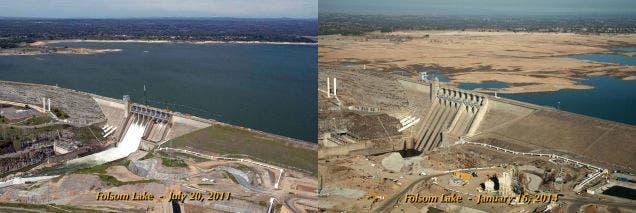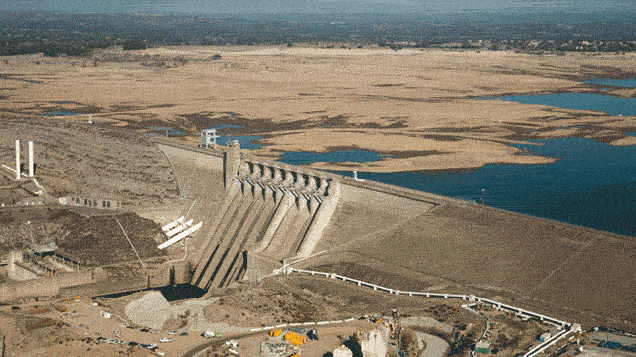
California is facing one of its direst drought streaks, and only last year it came out of its warmest winter on record. Clearly, things aren’t looking that good and the most vulnerable resource to these conditions is at the same time the most valuable: water. Desperate times, call for desperate measures, and this means in some instances policymakers need to cut the chord. But where should regulators first stop water access given California has allocated five times more surface water than the state actually has?
Ted Grantham and Joshua Viers of UC Davis explored the state’s water-rights database only to come to this confusing and disheartening conclusion. To be more exact, water-rights allocations exceed the state’s actual surface water supply by about 300 million acre-feet, enough to fill Lake Tahoe about 2.5 times. The analysis was published in the journal Environmental Research Letters.
[ALSO READ] California could go 100% renewable by 2050, study shows
As it is today, California’s water-rights allocation system is obsolete, complicated and totally unfitted for drought mitigation. Then there’s the people of course which choose to abuse the system. The researchers note that people sometimes take water, apply retroactively for the right to use the water and continue taking it — sometimes for up to a decade — while their applications are pending. Adding to the growing problem is inaccurate reporting, with some deliberately overestimating their water use so they don’t lose supply when cutbacks eventually occur. Some regions are managed even worse. Water rights for the San Joaquin River basin, for instances, have been allocated in excess up to eight times the river’s average annual flow. Does anybody actually tell these people that water is a limited commodity?
“All those allocations mean that in times of drought, it’s hard to tell who should have to reduce water use, causing delays in issuing curtailments,“ said Viers, director of the Center for Information Technology Research in the Interest of Society at UC Merced.
The year 2013 was the driest California has seen in 119 years, and that’s causing some obvious problems considering the sate supplies over half of America’s fruits and vegetables (and almonds). The above gif shows Folsom Lake, explaining how the reservoir was at 97 percent capacity two-and-a-half years ago and just 17 percent capacity in January.







